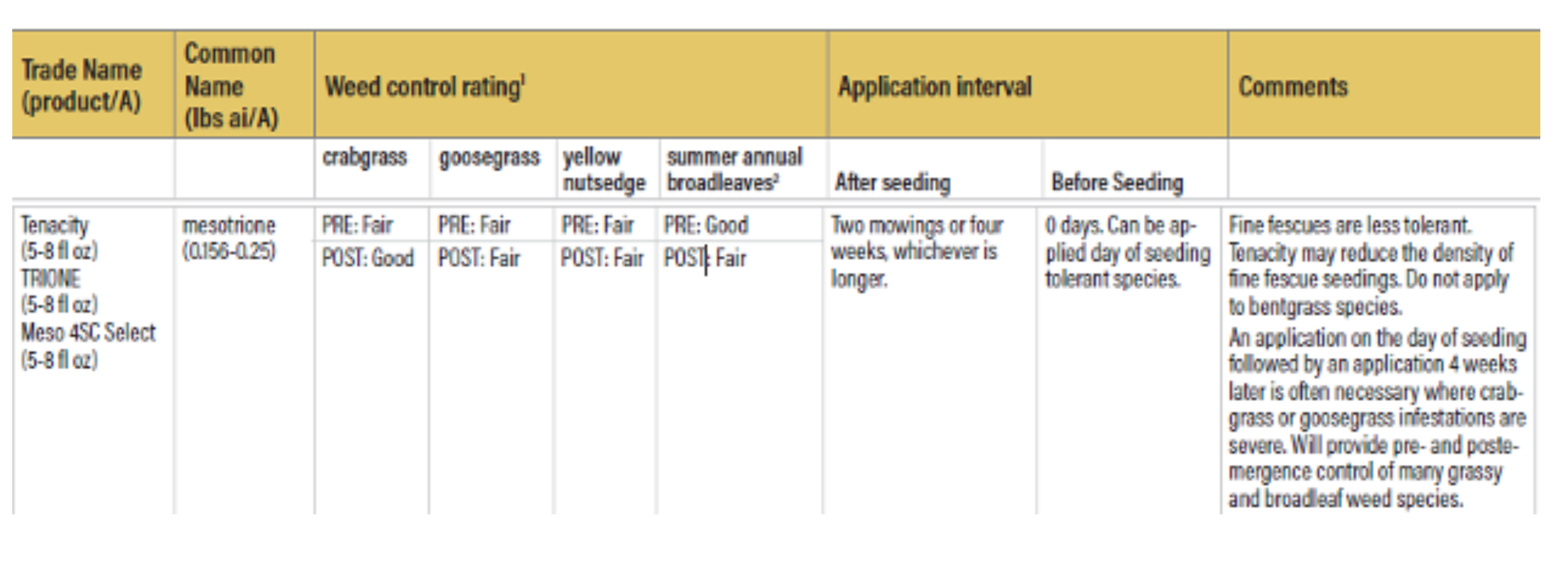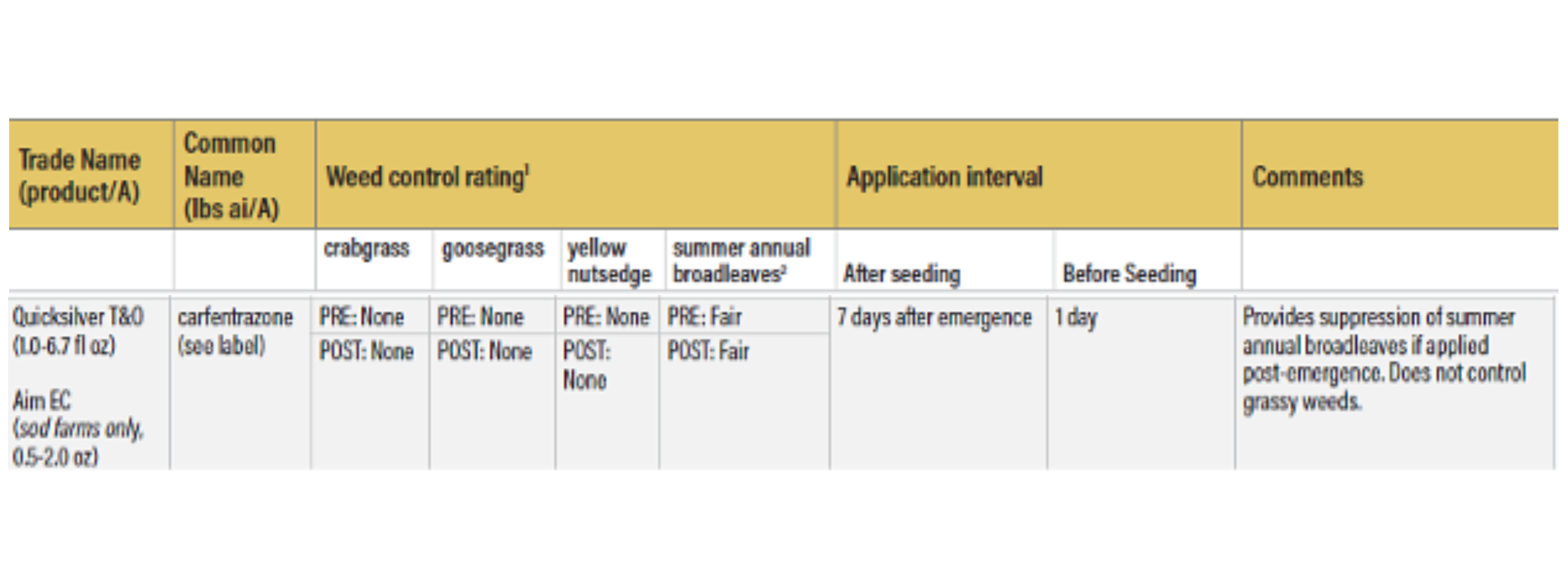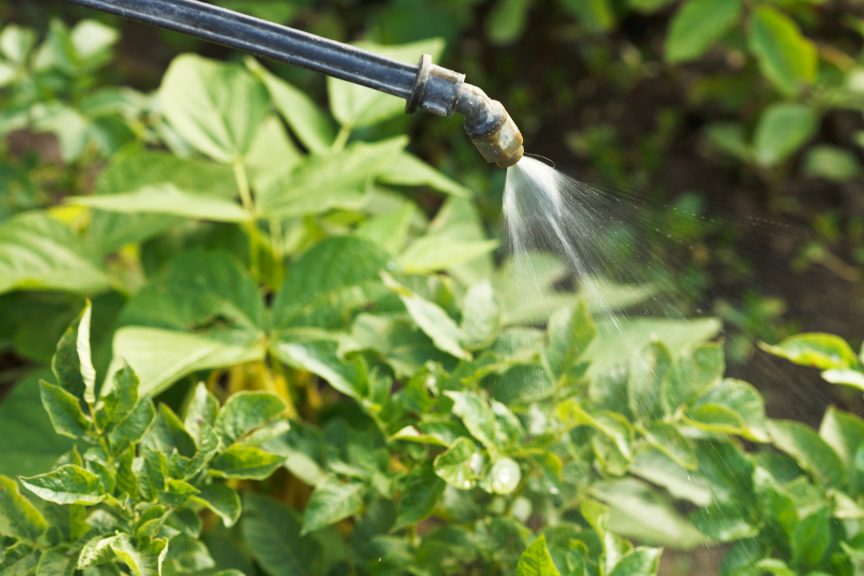Spring is a crucial time for lawn care professionals looking to establish new turf or improve existing lawns through seeding or overseeding before the Summer stress kicks in. Much of the country experienced extreme drought and less than ideal overseeding and establishment conditions this past Fall in 2024. Combine that with the winter conditions so far, we anticipate there will be a greater need for Spring seeding across several markets.
Spring seeding can be a challenge as weed competition can significantly hinder turfgrass establishment, leading to weak, patchy lawns. Not to mention running up against the application window to get critical pre-merge products out as well. Selecting the right weed control products and strategies is essential to balancing weed suppression while allowing grass seed to germinate and establish before the summer months.
This article focuses on lawn-specific weed control strategies and products that can be used during spring seeding and overseeding, highlighting their effectiveness, targeted weeds, and turf safety considerations.
Challenges of Weed Control During Spring Seeding
Spring conditions create an ideal environment for weeds to compete with young turfgrass seedlings. Common weeds such as crabgrass, dandelion, clover, chickweed, and henbit thrive in disturbed soil and can quickly overtake weak or slow-growing turf. The challenge with weed control during seeding is that many traditional pre-emergent herbicides create a “barrier” that prevents not only weeds but also turfgrass seeds from germinating. Post-emergent herbicides must also be selected carefully, as many products can damage or stress young turf. To achieve a healthy, weed-free lawn while establishing new grass, timing, herbicide selection, and proper cultural practices must all be considered. Aside from the agronomic perspective, Spring seeding can also put stress on your business’s operational efficiency so it’s critical to plan and understand the scope of the work early on to formulate the best program approach if you determine Spring seeding projects have increased within your customer base this upcoming season.
Herbicides Intended for use During Spring Seeding
Mesotrione (Tenacity®)
- Description: Mesotrione provides both pre-emergent and early post-emergent weed control, making it highly effective for spring seeding. It suppresses weeds while allowing turfgrass seedlings to grow. A temporary whitening of weeds occurs after application, indicating effectiveness.
- Targeted Weeds: Crabgrass, goosegrass, yellow nutsedge, broadleaf weeds (chickweed, clover, dandelion)
- Formulations: Mesotrione is available as a liquid formulation or as a combination product with fertilizer. Contact your local Central Turf and Irrigation representative to discuss which product is best for your unique situation.

Carfentrazone (Quicksilver®)
- Description: Carfentrazone is a fast-acting herbicide that controls broadleaf weeds with minimal risk to young turfgrass. It is often used in combination with other post-emergent products for enhanced weed control.
- Targeted Weeds: Broadleaf weeds (chickweed, clover, dandelion) only, and will not control grassy weeds.

Quinclorac (Drive XLR8®)
- Description: Quinclorac is an excellent post-emergent crabgrass control option. Although it cannot be used at seeding, it is effective in cleaning up breakthrough weeds once new grass has matured. There is an exception for Tall Fescue and Perennial Ryegrass lawns it can be applied day of seeding.
- Targeted Weeds: Crabgrass (post-emergent), clover, dandelion

Cultural Practices to Enhance Weed Control
While these herbicides can play a key role in weed management, proper lawn care practices significantly enhance their effectiveness.
Proper Seeding Rate and Timing
- Seeding at the recommended rate helps ensure dense turf coverage, reducing open space where weeds can establish.
- Spring seeding should be done as early as possible, when soil temperatures reach at least 50-65°F, to give grass a head start before summer weed pressure increases.
Fertilization and Watering
- Applying a starter fertilizer with a balanced ratio of nitrogen, phosphorus, and potassium promotes strong seedling development.
- Light, frequent irrigation keeps the soil moist to support germination and early turf growth while reducing weed competition.
Mowing Height Adjustments
- Maintaining a higher mowing height (3-4 inches) shades out weed seedlings and encourages deeper turfgrass rooting.
Conclusion
Spring seeding and overseeding requires a strategic approach to weed control to ensure a successful lawn establishment. Combining proper herbicide use with good cultural practices, such as correct seeding timing, fertilization, and mowing, will increase Spring seeding success. Once Spring seed has established there is the option for a late season pre-emerge application to help provide season long weed control. Contact your local Central Turf and Irrigation Supply representative to learn more!
Charts Referenced: 2024; Turfgrass Weed Control for Professionals. A. Patton & M. Elmore; https://turf.purdue.edu/extpub/turfgrass-weed-control-for-professionals/
Disclaimer: Please carefully read and follow all label instructions.

